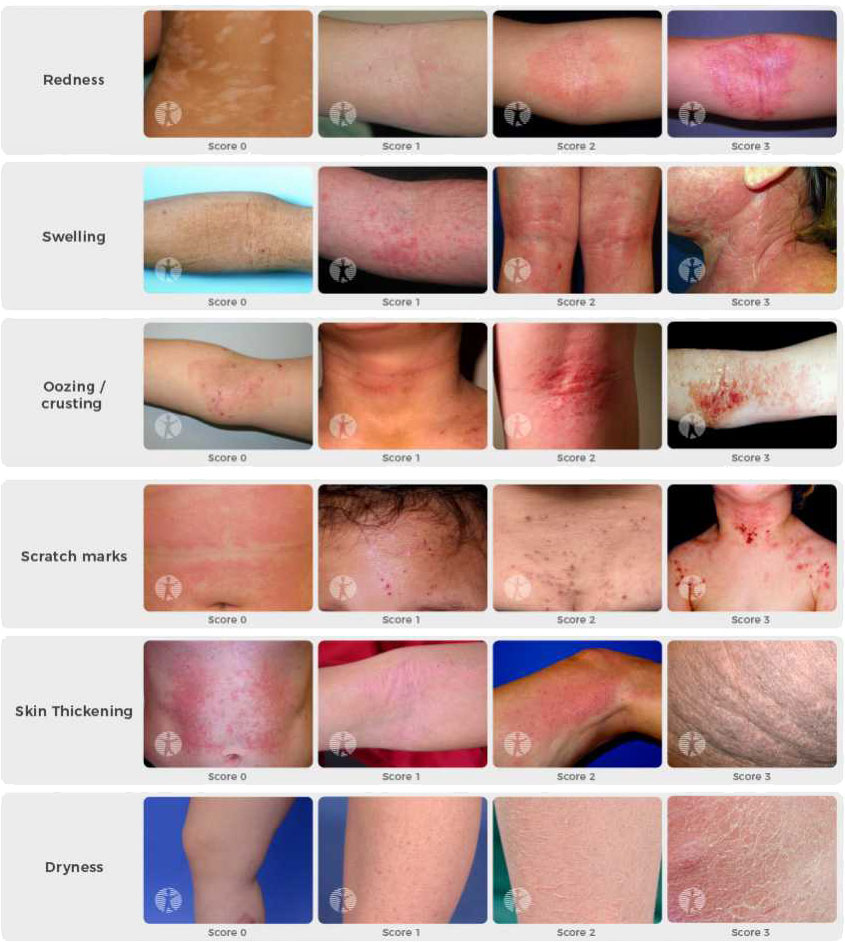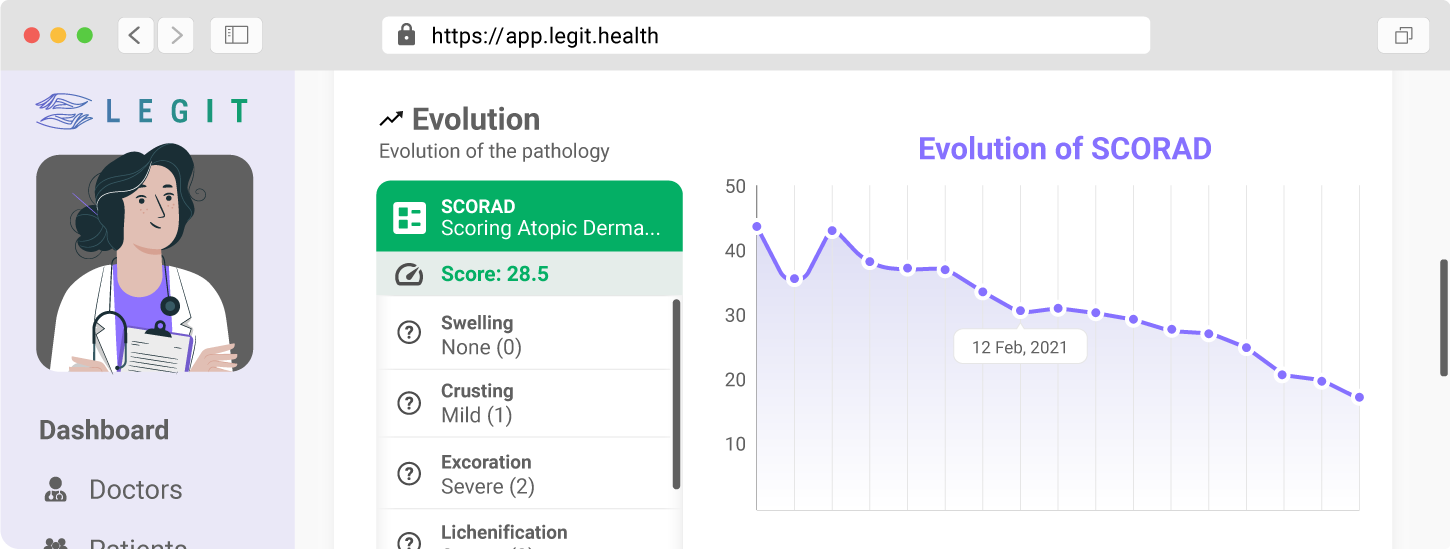How does the SCOring Atopic Dermatitis (SCORAD) work?
How does the SCORAD work?
The SCORAD is a questionnaire that must be filled in by doctors. Doctors must fill in the SCORAD scoring system to measure the severity of eczema lesions and the patient's response to treatment.
The SCORAD produces a numeric score ranging from 0 to 103, with higher values reflecting higher atopic dermatitis affectation. In general, a SCORAD score of 25 to 50 is considered a moderate disease, and a score over 50 is considered severe.
A reduction in the SCORAD score is the current benchmark for most clinical trials in atopic dermatitis and the criterion for efficacy of new atopic dermatitis treatments approved in Europe.
How do you calculate the SCORAD score?
To measure the SCORAD score, you must look at three things:
- The extent of the body surface that is affected.
- The intensity of each of the 6 clinical signs.
- The degree to which the patient reports 2 subjective symptoms.
Measuring the affected surface
The extent of the affectation in the body is determined by dividing the body into nine regions: head and neck (h), upper limbs (u), lower limbs (l), anterior trunk (a), back (b), and genitals (g). Each region accounts for 9%, 18%, 36%, 18%, 18%, and 1% of the total Body Surface Area, also called BSA).
Measuring the intensity of clinical signs
To measure the intensity of the clinical signs, you must look at six things: erythema, oedema, oozing, excoriations, lichenification, and dryness. Each of these signs is assessed separately on a scale of 0 (none) to 4 (severe).
Measuring the subjective symptoms
The subjective symptoms of SCORAD are itchiness and sleeplessness. Both are assessed on a scale from 0 to 10.
What is the SCORAD formula?
The formula that calculates the SCORAD is the following:
SCORAD = E/5 + 7*I/2 + S
Legend:
- E = extent of the affectation
- I = intensity of the clinical signs
- S = patient-reported subjective symptoms
What are the limitations of the SCORAD?
Several limitations of the SCORAD have been identified, and include the following:
- The SCORAD has been criticized for not correlating the clinical extent of the disease with quality of life and the psychological stress caused by eczema. The patient's measure of the quality of life is often worse than the physician-rated clinical severity.
- There are significant inter-rater reliability issues regarding the measurement of BSA.
- SCORAD scores can vary substantially between experienced and inexperienced physicians, raising concerns for inter-rater reliability.
- Improvements in SCORAD score are not linearly related to severity or improvements in atopic dermatitis. The extent of eczema involvement is measured using a discrete scale and the areas corresponding to each score are nonlinear.
- Most patients fall into a narrow band of scores, thereby decreasing the usefulness of the full range of scores (i.e., scores above 70 are rare). The validity of this scale may be overrated, in part because of the skew toward lower scores.
- There is little research on the reliability of the assessments for erythema, oedema, oozing, excoriations, lichenification, and dryness, together with overall SCORAD scores.
- Criterion validity is restricted by the lack of a gold standard measure of atopic dermatitis severity.
- Little work has been done to determine the clinical relevance of derived SCORAD scores.
What is the difference between a severe and a moderate score?
There are many differences between severe and moderate atopic dermatitis.
The following chart shows how different severities look depending on each of the visual signs: redness, thickness, and scaling.


Using Artificial Intelligence, ASCORAD processes smartphone images and automatically translates them into the domain of the SCORAD.